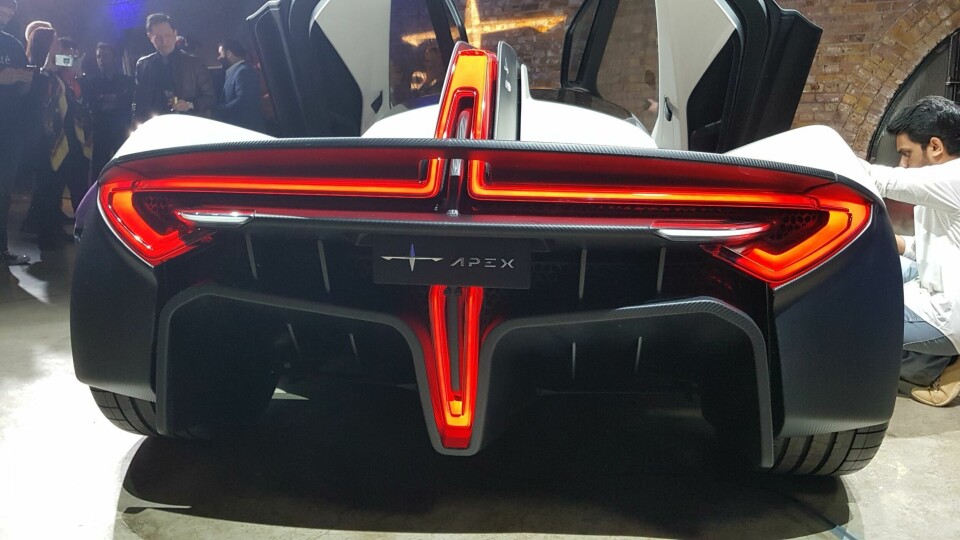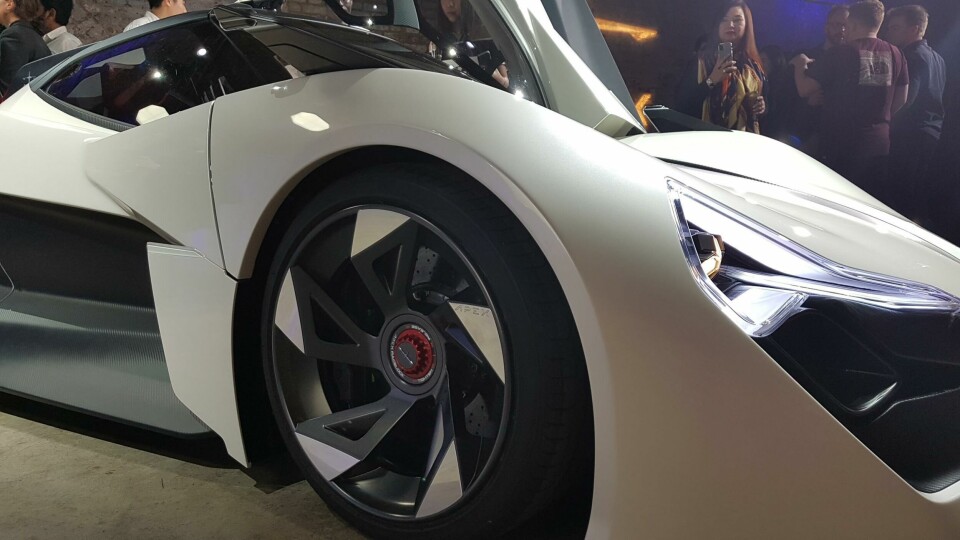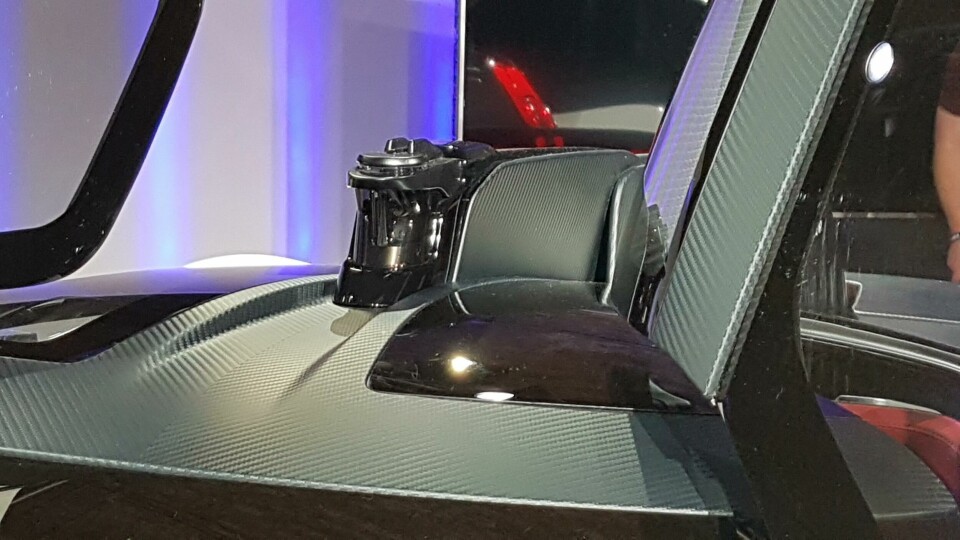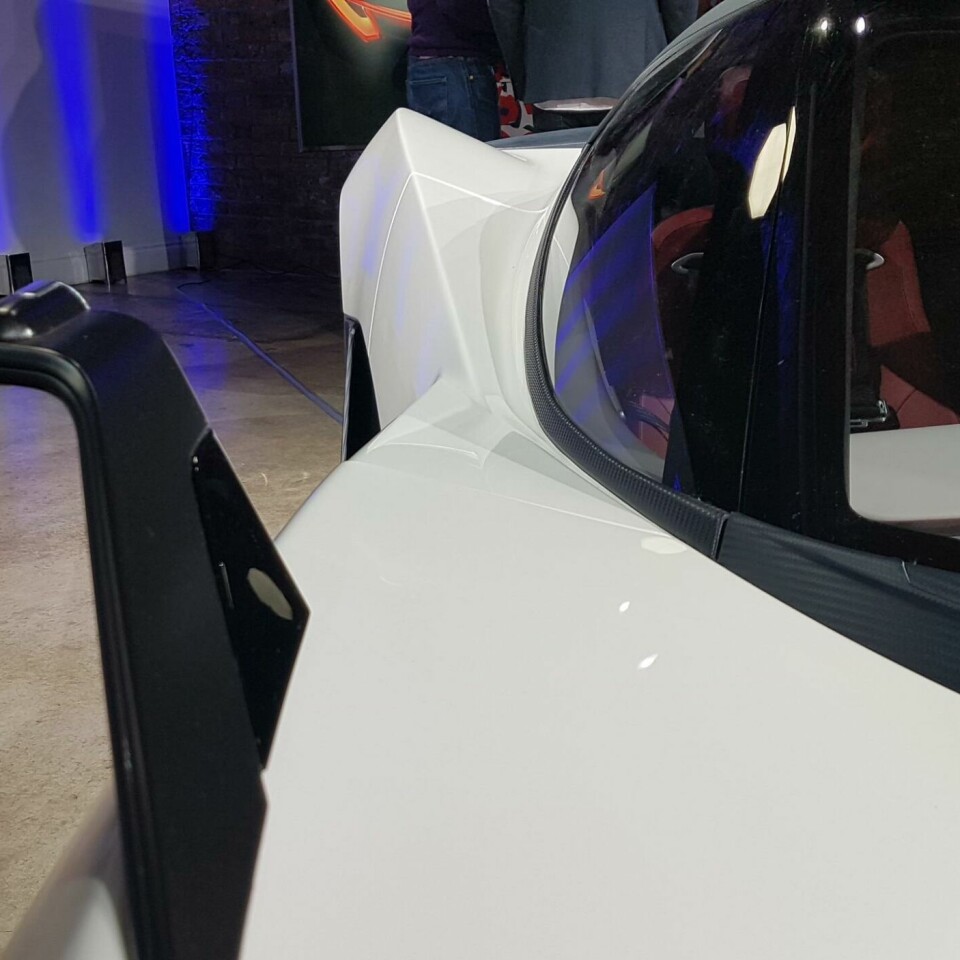
Apex AP-0 combines LIDAR with lightness
ADAS-infused electric supercar gamifies track driving to make the future more fun (good timing)
Apex Motors, a British-based electric sports car company founded by two brothers from Hong Kong, revealed its AP-0 Concept in London last month. CDN braved public transport to be there (pre-lockdown) and hear from lead designer Guy Colborne.
The AP-0 is the product of a short, intensive process. Initial sketches started in March 2019, creation of the package began in July and the design was signed off in October.
As Apex Motors has been created with an Eastern influence, it was considered important to bring that influence to the AP-0’s aesthetics as well. Therefore, the small design team took inspiration from dragons, as they represent wealth and good fortune in the East. As was explained in the debut presentation (watch here), this manifests itself in the front end, from the nose and DRG to the forms reaching past the front wheel arches – known as the car’s ‘dragon face’. This theme was then combined with one of high technology to create the overarching character of ‘a Cyber Dragon’.
A fair amount of visual lightness is created through use of two-toning, as the black section of the front face also stretches back to the windscreen, widening as it runs along the centreline. The lower section of the bodyside is also bare carbonfibre from the door to the tail – ditto the structural part of the glazed roof in order to make the car appear lower and flatter. “I like technical details,” commented Colborne. “We had to integrate the carbonfibre – and I like showing carbonfibre, because there’s the technical aspect – but then actually draping a flowing form over it. So, everything has been about flow over the top, structure, and flow around the bottom.”

Speaking of flow, there is a subtle continuity tying different aspects of the car together. The central horizontal strip in the headlights, for instance, runs ‘under’ the front wheelarch to reappear as the lower edge of the upper bodywork, running along the door. More subtle lines run along and inside the arches, adding definition.
Extending from the roof is a central fin which is slotted to vent heat from the battery and is integrated with some of the body-coloured top layer reaching up and appearing to hold it in place. This fin stretches back to create the vertical element of a unique and dominant rear lighting signature, shaped like a stylised ‘+’ symbol. This graphic element was considered so strong within Apex that it became the company logo. Resting atop the horizontal elements of this huge taillight unit is a full-width aileron – the only active aero surface on the car, as most of the downforce is generated through the underbody to avoid cluttering the bodywork.
The interior puts both occupants in a feet-up position, akin to that of an LMP or single-seater racing car – partly for that exact comparison, but also to free-up space for elements of the underbody aero system. A narrow spine on the centreline bisects the cabin, while the HMI comprises of a trio of screens arranged in a manner loosely resembling the wings of a plane. Physical switches for essential controls are found on the steering yoke, while the passenger can access infotainment through a laid-back central touchscreen.
The dashboard is a single, skinny leather-clad boomerang, while the centre console is so narrow that it only has space to slot a smartphone in sideways and upright. The seats, meanwhile, are so thin they could almost be padded sections of the carbon tub. Certainly, this is a car meant for track days rather than touring.

While most electric supercars are big, two-tonne, 2000-horsepower monsters, the AP-0 is somewhat more down-to-earth, producing ‘only’ 650 horsepower and weighing just 1200kg. The weight figure is especially impressive because just the 90kWh battery on its own weighs 550kg, meaning that the combined chassis, interior and rear-axle electric-drive system only add up to 650kg – lighter than a (complete) Formula 1 car despite having two seats. Contrast this against Lotus boasting of the Evija being lightest-in-class while weighing 1680kg and you can appreciate the difference in scale here, which is also reflected in the AP-0’s projected price being £150,000 instead of £2million – as well as its physical compactness, given it is just 4380mm long with a 2650mm wheelbase.
“A sports car, to me, is small. It should be compact, almost like you’re wearing the car and it’s a part of you,” stated Colborne. “Really big cars seem to be quite ‘negative’, in the way people react to it. I mean, you want someone to look at the car and go ‘that’s beautiful’ rather than ‘that’s huge!’ or think ‘that’s sticking two fingers up at the world’.”

But while dragon-faced, racecar-inspired looks and carbon-based lightness are all well and fine, the main point of interest with the AP-0 – for us, at least – is the LiDAR sensor mounted on the centre of the roof, at the start of that big dorsal fin. What is a sports car, electric or otherwise, doing with one of those? According to Colborne, it’s part of a mission to make the near future of the car a more engaging and exciting prospect.
“You see a lot of people go to track days, but they want to get taken around in their car. They get a racing driver to go ‘right, I’m now going to show you what your car is actually capable of’,” he began. “But the idea of this is that if you want to go on a track day, you can drive around and have the full sports car experience, but then you can tell it ‘OK, show me what you can do’. Also, the car can actually start showing you how to go into a corner, and so on, and on a display it can put on a racing line and say ‘follow this’. So, that’s the opportunity you get with autonomy.”

While some may get stuck on feeling uneasy about being whisked around Brands Hatch by a self-driving supercar they’re not sure how much to trust, the other aspect of this approach – with Augmented Reality projecting racing lines and braking points onto a head-up display while you drive yourself – ought to appeal more to those who have grown up playing racing games on console or PC from a young age. Since more and more people have discovered cars or the excitement of motorsport predominantly through gaming rather than magazines and TV – something we’ve touched on before on CDN – the gamification of real-life track driving starts to seem like a natural progression of technology. Although, out-of-contract racing drivers doing trackday tuition to make ends meet might argue with that…
But perhaps this is the way to keep the sports car relevant in a more automated world, especially once electrification removes traditional points of driver engagement like engine noise and gear changes (although Apex is looking at how best to bring sound back into the equation in a suitable way). Colborne also teaches at the RCA, where students often create thought experiments around how autonomy will change the car and the world around us.

“You see a lot of people design autonomous cars and it just becomes a living room on wheels. With a sports car, nobody’s going to want that,” he explained. “The whole sports car experience is about connecting you with the car and being at one with it, so the challenge of putting an autonomous system into a sports car – Level 3, Level 4 – is that the car’s taking over. But the car shouldn’t be your nanny, the car should be your performance driving instructor – and there’s a big difference between the two…”
Colborne also elaborated on how the more advanced ADAS has to feel supportive, rather than invasive, on the road. “If you’ve driven cars with the safety systems on, the steering wheel starts shaking, the car starts beeping at you. Sometimes it’s very aggressive, sometimes it’s just annoying. So, it becomes about user experience; it’s got to be more subtle and more [for an AP-0 driver to go] ‘right, I wanna learn’, rather than ‘I’m gonna get told off’.”
To develop these systems, among others, Apex is planning to build an FIA-approved racetrack in the Greater Bay Area, close to Hong Kong. As well as testing prototypes, the plan is to establish a ‘race academy’ at this facility wherein they can train up “the next generation of drivers.”
The 650-horsepower Apex AP-0 will cost £150,000 plus local taxes, and the company is accepting deposits now ahead of the car entering production in the UK in late 2022.


























